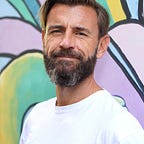In the Footsteps of the Incas
Inca Trail hiking with a mescaline-based difference
There are many things to see in and around Cusco, and many ways to see them. Andean guides are ten to the penny — some good, some decidedly average. Many focus on the history of the Spanish Conquistadors, whilst others provide textbook supposition surrounding the mysterious Inca ruins scattered around the hillsides like the half-finished Lego structures of a child with a short attention span. I’m a lapsed Catholic and former altar boy. I’ve had no affiliation with the religion since my teens. Nor have I had any love for its rather brutal history.
Funnily enough, arriving in Cusco in November 2019, I was reminded that the Battle of Cusco (fought between the Conquistadors and the Incas) was in fact in November 1533 — a 486 year anniversary of sorts. And so Francisco Pizarro and his band of special helmet-wearing chums marched into Cusco, the capital of the Incan Empire, whereby these Spanish invaders plundered the city of a great deal of gold and silver. This action alone ensured my disinterest in the Spanish aspect of Cusco’s history. It seemed to me that the ransacking of such a marvellous and magical place, surrounded by Incan wonders (all in the name of God) was a wee bit misguided. Especially as they shoved said merciless white-haired deity down the throats of what was…
